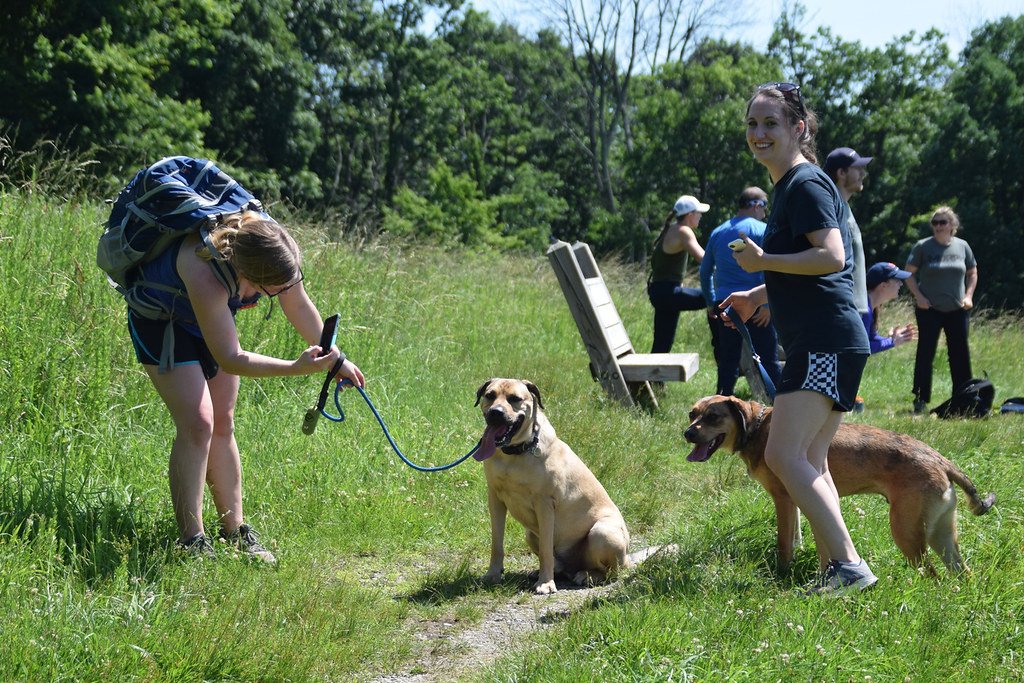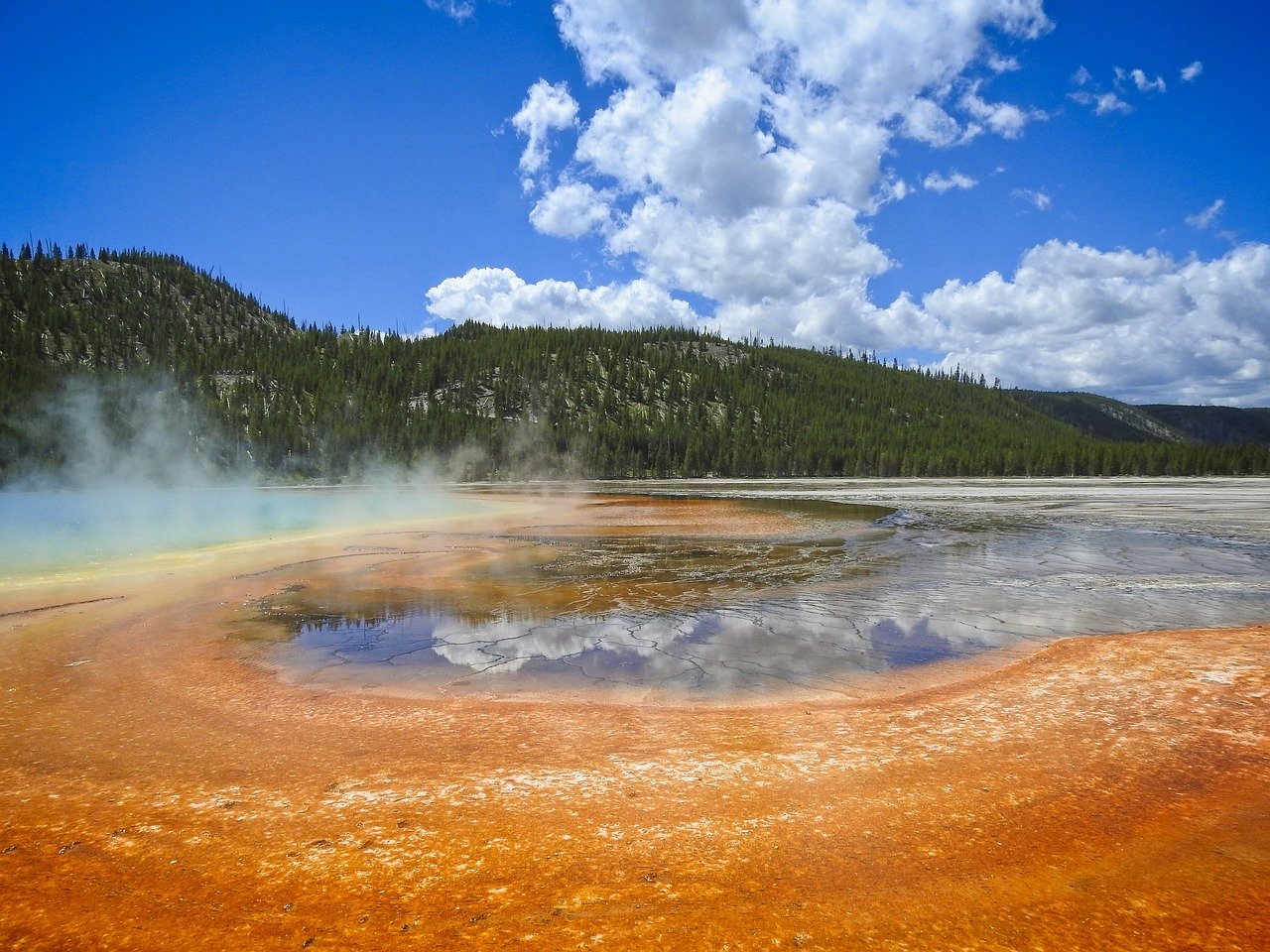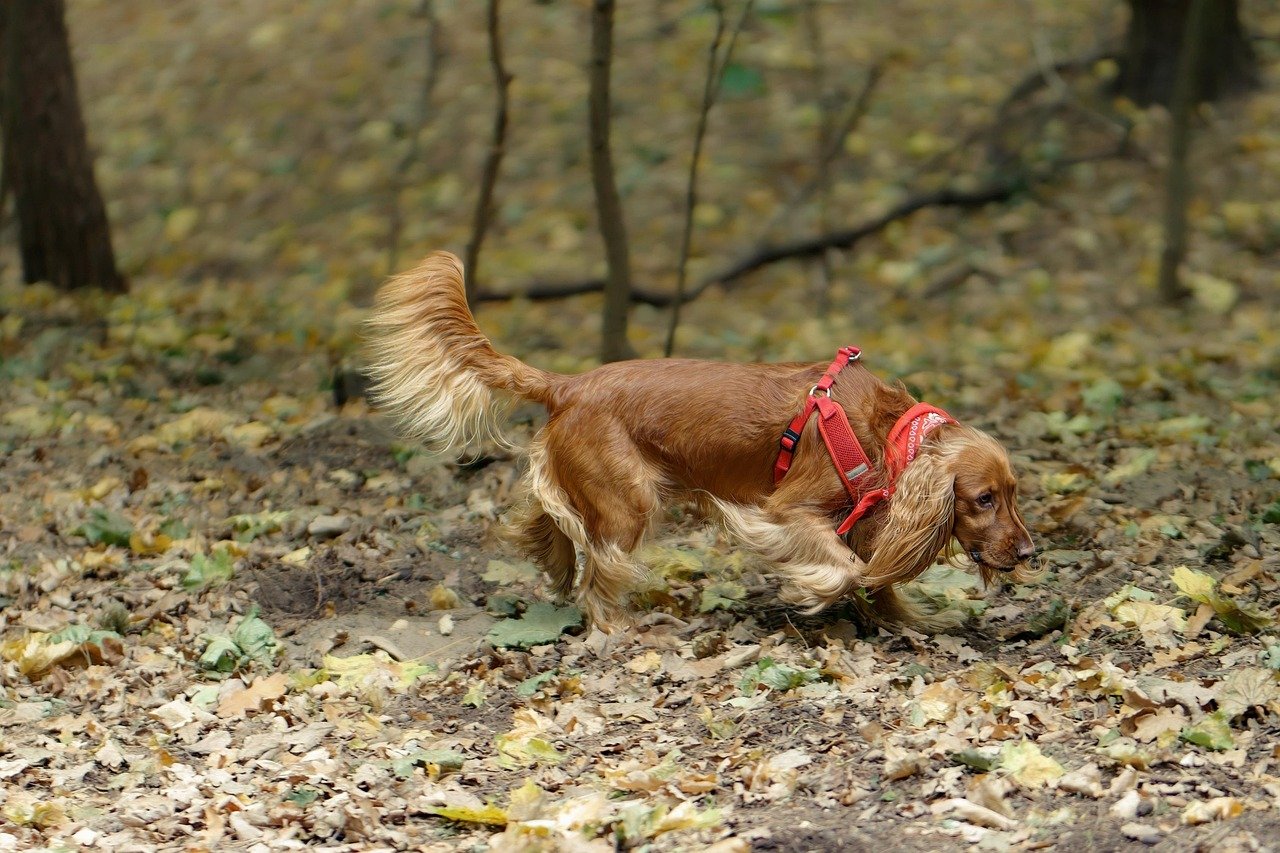Letting your dog off leash in Yellowstone might seem like a chance for freedom and fun, but it can actually be dangerous—for both your pup and the park’s wildlife. Yellowstone is home to bears, bison, elk, and wolves, and even the most well-trained dog could panic, chase, or be chased in a sudden encounter. Off-leash dogs can also damage fragile ecosystems or disturb nesting birds and protected habitats. Plus, park regulations strictly require pets to be leashed and confined to specific areas like roads, campgrounds, and parking lots. Violating these rules can lead to hefty fines—or worse, a tragic accident. Keeping your dog leashed isn’t just about following the rules; it’s about protecting the wild and your best friend.
Predators Have Zero Tolerance for Unleashed Pets
Picture this: you’re walking with your beloved Golden Retriever when suddenly a pack of wolves appears. What seems like an innocent walk turns into a nightmare faster than you can blink. The wildlife in Yellowstone includes bears and wolves, and there’s a high risk of the dog being injured or even killed by them.
Wolves see most dog breeds as competition and will be quick to assault. As for bears, sometimes, they follow pets and attack their owners instead! Your furry companion doesn’t understand that these aren’t just bigger versions of dogs at the local park. Yellowstone is full of bears and wolves, and bears and wolves do not like dogs. Wolves see domestic dogs as competition and bears have been known to follow dogs back to their owners.
The stark reality is that domestic dogs trigger aggressive responses in wild predators, making even a short moment off-leash potentially fatal. These aren’t suburban coyotes we’re talking about – these are apex predators with zero patience for perceived threats to their territory.
Thermal Death Traps Look Deceptively Inviting
Yellowstone’s hot springs might appear like perfect swimming holes to your dog, but they’re actually death traps in disguise. Thermal areas and boardwalks are closed to dogs for their safety. Most pools of water and thermal features in Yellowstone are at or near boiling point, but it can be difficult to tell the difference between hot and cold water.
Unfortunately, pets have been killed by jumping or falling into the hot springs in the past. Think about it – your dog sees water and instinctively wants to cool off, especially after a long hike. But the hot springs found in abundance throughout Yellowstone National Park’s thermal areas are bubbling cauldrons of steam and boiling water, most of them hotter than 150°F, and many of them in the 185°-205°F range.
Unlike humans who can feel the heat radiating from these springs, dogs rely on visual cues that can be tragically misleading. Dogs have a hard time distinguishing between cool water and hot water, and since a lot of the thermal water in the park is at or near the boiling point, many dogs have been injured or killed by jumping into these dangerous waters.
Human Heroes Often Become Victims Too
The most heartbreaking incidents happen when devoted pet owners try to save their dogs from thermal springs. Yellowstone’s hot pots have injured hundreds of other people, including a woman who tried to rescue her dog from a pool in 2021. The dog later died. These rescue attempts often end in double tragedy – both pet and owner become casualties.
A Washington woman has been hospitalized with significant burns after attempting to rescue her dog from a thermal hot spring at Yellowstone National Park. The 20-year-old woman, who has not been publicly named, suffered significant thermal burns between her shoulders and feet, the National Park Service (NPS) said. It’s a natural instinct to want to save your furry family member, but burn deaths and injuries result from people trying to rescue dogs from boiling hot springs. Even the most heroic rescue attempts typically result in severe burns for the human while the dog remains beyond help.
Your Dog Becomes Bait for Dangerous Wildlife
An off-leash dog in Yellowstone essentially becomes live bait for some of North America’s most dangerous predators. And while your dog might be able to outrun a bear, you probably couldn’t! The terrifying reality is that bears often follow dogs back to their owners, creating a scenario where your pet inadvertently leads danger straight to you. This isn’t just speculation – it’s documented behavior that has led to human injuries and deaths.
Bison have injured more people in Yellowstone than any other animal. Bison are unpredictable and can run three times faster than humans. When your dog approaches these massive animals out of curiosity, it often triggers defensive reactions that can quickly escalate. Even the most well-trained dog becomes unpredictable when faced with wildlife they’ve never encountered before, potentially putting both of you in mortal danger.
Disease Exchange Works Both Ways
Your beloved pet isn’t just at risk of physical harm – they’re also vulnerable to diseases that wild animals carry naturally. As a domestic companion, your pet won’t be immune to a wide range of wildlife diseases. The animals in the park, in turn, will be defenseless against certain diseases that the dog carries. Think of it as a biological exchange program where nobody wins. Wild animals in Yellowstone have developed immunities to diseases that could kill your dog within days, while your pet might be carrying suburban pathogens that could devastate local wildlife populations.
Domestic animals can transmit diseases to the park wildlife in Yellowstone, which can lead to the sickness or death of the animals that live here naturally. This two-way disease threat means that even a brief encounter between your unleashed dog and wild animals could have consequences lasting far beyond your visit.
Park Rangers Aren’t Kidding About the Six-Foot Rule

That six-foot leash requirement isn’t some arbitrary bureaucratic nonsense – it’s a life-saving regulation born from decades of tragic incidents. That means it has to be on a leash (the max length for it is six feet), in a crate, or sitting in a car. That means it has to be on a leash (the max length for it is six feet), in a crate, or sitting in a car. Park rangers have seen enough preventable tragedies to know that even the most obedient dogs can become unpredictable in the face of wild animals or thermal features they’ve never encountered.
Park rangers and park volunteers patrol the hiking trails, roads, and viewpoints in Yellowstone regularly. When they enforce these rules, they’re not trying to ruin your vacation – they’re trying to prevent you from becoming another statistic. Pets must be kept under physical control at all times – caged, crated, or on a leash not to exceed six feet in length. The six-foot limit ensures you can quickly regain control if your dog spots something interesting, whether it’s a thermal pool or a massive bison.
Even Service Dogs Must Stay Leashed
If you think your dog’s training exempts them from these rules, think again. Only registered service dogs are allowed to be in the park and all of its facilities. But even they are required to be on a leash at all times while visiting Yellowstone. Professional service dogs undergo years of intensive training to ignore distractions and respond to their handler’s commands, yet even they must remain leashed in Yellowstone. This should tell you everything you need to know about how dangerous the park environment is for dogs.
Service dogs that are recognized by the ADA are allowed to accompany their owners throughout the entire park. Qualified service dogs must be specifically trained to perform tasks related to the owner’s disability. Emotional support, therapy, or comfort animals do not qualify as service animals in Yellowstone National Park and will be required to follow all pet regulations. If dogs trained to ignore gunshots, loud noises, and crowds need to stay leashed, your family pet definitely needs that extra security too.
The 100-Foot Boundary Exists for Good Reason
You might think staying close to roads keeps you safe, but there’s still a crucial distance requirement you must follow. Your dog can be with you in any of the parking lots in Yellowstone, but they are not permitted to go more than 100 feet from the pavement. This boundary isn’t arbitrary – it’s the safety zone where park rangers can quickly respond if something goes wrong.
Pets are limited to travel in Yellowstone National Park within your car, at a front country campground or within 100 feet of roads and parking lots. They must be on a leash no longer than 6 feet and owners must clean up and dispose of all pet waste. Beyond this perimeter, you enter true wilderness where wild animals roam freely and thermal features can appear without warning. It’s like having a safety net – stay within the 100-foot zone and help is accessible, venture beyond it and you’re truly on your own. Pets can be no more than 100 feet off roads, parking lots, and campgrounds. This rule also protects the wildlife from unnecessary stress caused by domestic animals encroaching on their territory.
Your Vacation Dreams vs. Your Dog’s Safety Reality
Many dog owners arrive at Yellowstone with romantic visions of hiking scenic trails with their four-legged companions, but the reality is much more restrictive. Problem is, Yellowstone itself isn’t super welcoming to your pets. In fact, Yellowstone pet regulations require you to keep dogs or even cats on the road and hard leashed. Your dog won’t even be allowed on park trails!
Those Instagram-worthy photos of dogs posing near Old Faithful? They’re either taken illegally or from parking areas where your pet’s safety is constantly at risk. BUT bringing your dog in Yellowstone will highly limit the activities and hiking you can do. The harsh truth is that bringing your dog to Yellowstone means sacrificing most of the activities that make the park special. Pets are not allowed on boardwalks, hiking trails, in the backcountry, or in thermal areas. You’ll spend your entire visit worrying about your pet’s safety instead of enjoying the natural wonders around you.
Even Parking Lots Pose Unexpected Dangers
You might assume that sticking to developed areas keeps your dog safe, but even parking lots in Yellowstone can be dangerous. Be aware that there are many parking areas without shade. Even though the park is at a high elevation it can get very warm and hot in some areas which can be very dangerous to pets inside a closed vehicle. Wildlife regularly wanders through parking areas, and thermal features can be surprisingly close to roadways.
Don’t leave the dog in the vehicle, as this can turn fatal very quickly. The elevation changes and unpredictable weather in Yellowstone can create deadly conditions for pets left in cars within minutes. Keep in mind that you must keep your dog on a leash at all times and you should not leave them unattended in the car. Temps rise quickly during warmer days and can cause your dog to overheat if left unattended. What seems like a safe, shaded parking spot in the morning can become a death trap by afternoon as the sun moves and temperatures soar.
The Tragic History Speaks Volumes

Yellowstone’s history is filled with preventable pet-related tragedies that should serve as sobering warnings for today’s visitors. While most injuries and fatalities due to hot springs in Yellowstone National Park have been accidental, with people falling into springs they were not aware of, at least one death and numerous severe injuries have been a result of off-leash dogs jumping into springs, and their owners trying to rescue them. The most heartbreaking case occurred in 1981 when David Alan Kirwan died trying to save his friend’s dog from a thermal pool.
On 20 July 1981, 24-year-old David Alan Kirwan from La Cañada, California, was driving through Yellowstone’s Fountain Paint Pot thermal area with his friend Ronald Ratliff and Ratliff’s dog Moosie. At about 1:00 P.M. they parked their truck to get out and take a closer look at the hot springs; Moosie escaped from the truck, ran towards nearby Celestine Pool (a thermal spring whose water temperature has been measured at over 200°), jumped in, and began yelping.
Kirwan and Ratliff rushed over to the pool to aid the terrified dog, and Kirwan’s attitude indicated he was about to go into the spring after it. These stories aren’t just statistics – they’re real families who experienced unimaginable loss because they underestimated the dangers facing unleashed pets in Yellowstone.
Your Dog’s Instincts Become Their Worst Enemy

Everything that makes your dog a great companion at home becomes a liability in Yellowstone’s unforgiving environment. Their natural curiosity about new smells and sights can lead them straight into danger, while their protective instincts might trigger aggressive responses from wild animals.
We all need to be respectful of Yellowstone’s wild environment, but pets are particularly at risk of being injured by park wildlife. Your dog’s desire to investigate that interesting scent trail could lead them directly to a bear den or wolf pack territory. Their instinct to chase small animals might put them in direct conflict with bison or elk protecting their young. Pets may not be left unattended or tied to an object. Even the most obedient dog can’t override millions of years of evolutionary programming when faced with situations they’ve never encountered before, making every moment off-leash a potential disaster waiting to happen.
The choice seems obvious when you weigh your dog’s safety against your vacation desires. Yellowstone’s beauty will still be there for you to enjoy, but your four-legged family member’s life can’t be replaced if something goes wrong. Would you rather have memories of a safe, restricted visit or nightmares that last forever?
At the end of the day, keeping your dog on a leash in Yellowstone isn’t just about following the rules — it’s about keeping them safe in a truly wild environment. One unexpected moment can lead to serious consequences for both your pup and the park’s wildlife. A leash is a simple way to protect what you love while still enjoying the beauty around you. So stay mindful, keep that leash handy, and enjoy Yellowstone the right way — together and responsibly.

Born and bred in South Africa, a Capetonian at heart. Amy-Leigh’s love for nature and animals was inherited from her Dad. He loves taking the family on road trips to experience nature at its finest; Amy-Leigh’s favourite being whale watching in Hermanus and spotting Kudu along the West Coast. Amy-Leigh holds a BA in English Literature and Communication Studies.





